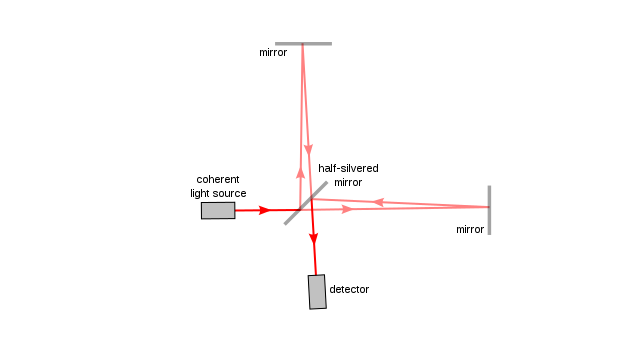
İnterferometri
İnterferometri, dalgalar arasındaki girişim olgusunu kullanan bir teşhis ve araştırma tekniğidir. İki veya daha fazla dalga uzayda bir noktada üst üste geldiğinde, o noktadaki ortaya çıkan dalganın yoğunluğunun, başlangıç dalgalarının yoğunluklarının toplamından farklı olabileceği gözlemlenir. Ortaya çıkan dalgayı veya daha doğrusu girişim saçaklarını analiz etmek için interferometre adı verilen aletler kullanılır.
Özellikle lazer optik interferometri, mesafelerin, hızların, yer değiştirmelerin ve titreşimlerin son derece hassas ve tekrarlanabilir bir şekilde ölçülmesine olanak tanıyan güçlü bir araçtır. Bu nedenle teknik, endüstriyel metrolojiden uzay telemetrisine, plazma fiziğinden sismolojiye kadar çeşitli analizlerle uyumludur.
Lasers play a crucial role in interferometry, a technique used to measure very small distances, surface irregularities, or changes in refractive index with extreme precision. The types of lasers commonly used in interferometry include He-Ne lasers, diode lasers, and frequency-stabilized lasers, each selected for their coherence, wavelength stability, and beam quality.
He-Ne (Helium-Neon) lasers are among the most widely used in interferometric applications due to their excellent coherence length, beam stability, and low noise. Operating typically at 632.8 nm, He-Ne lasers provide a clean, stable beam ideal for high-precision measurements in optical metrology, surface profiling, and displacement sensing. Their consistent output makes them a standard choice for laboratory interferometers and calibration systems.
Diode lasers are also commonly used in interferometry, especially in portable, compact, or cost-sensitive systems. Although their coherence length is typically shorter than that of He-Ne lasers, diode lasers can be engineered for improved performance and wavelength stability. They are often used in fiber-optic interferometers, biosensing, and MEMS characterization, where size, tunability, and integration are key advantages.
Frequency-stabilized lasers are used in high-precision interferometric setups, especially in scientific research and advanced engineering. These lasers maintain a very narrow linewidth and a highly stable output frequency, which is essential for ultra-sensitive applications such as gravitational wave detection (e.g., LIGO), precision spectroscopy, and dimensional metrology. Frequency-stabilized lasers can be based on gas, diode, or solid-state sources, depending on the required wavelength and application.
The choice of laser in interferometry depends on the required measurement sensitivity, environmental stability, and system configuration. He-Ne lasers are often used for classic precision setups, diode lasers for compact and flexible solutions, and frequency-stabilized lasers for the most demanding interferometric measurements.


